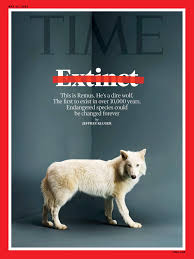Exploring the Dire Wolf: History and Cultural Impact

Introduction to the Dire Wolf
The dire wolf, an extinct canine species that roamed North America, is a point of fascination for both scientists and enthusiasts. Known scientifically as Canis dirus, these wolves lived during the Pleistocene epoch and have gained prominence not only in paleontology but also in popular culture, most notably through television series like “Game of Thrones.” Understanding the dire wolf is crucial for appreciating the biodiversity of ancient ecosystems and the influences that these ancestral predators have on contemporary storytelling.
Characteristics and Habitat
Dire wolves were significantly larger than modern grey wolves, with estimates suggesting they weighed up to 79 kilograms (175 pounds) and stood about 76 cm (30 inches) tall at the shoulder. Their robust structure was well-suited to the icy landscapes of the Ice Age, where they preyed on large herbivores such as bison and mammoths. Fossil evidence has been uncovered across North and South America, indicating that these predators thrived in varied habitats, from grasslands to forests.
Extinction of the Dire Wolf
Despite their prowess as hunters, dire wolves became extinct approximately 10,000 years ago, with several theories exploring the cause of their demise. Climate change, which altered their habitat and prey availability, played a significant role. Additionally, competition with early human hunters may have led to decreased populations. The dire wolf’s extinction serves as a poignant reminder of the fragility of ecosystems and the impacts of environmental changes.
Cultural Significance
In modern times, the dire wolf has been immortalised in fiction. It gained notoriety through HBO’s “Game of Thrones,” becoming a symbol of loyalty and family bonds. The dire wolf’s depiction in such cultural contexts has sparked interest in its real history, prompting further research and exploration within the scientific community. Notably, scientists continue to study dire wolf fossils to glean insights into their behaviour and interactions with other species, which can inform current conservation efforts.
Conclusion
As research continues, the dire wolf remains a relevant subject for both scientific inquiry and cultural appreciation. These majestic creatures, despite being long extinct, continue to resonate in our collective consciousness, inviting intrigue into our planet’s prehistoric life. As we ponder the implications of their extinction and the lessons learned, we must remain vigilant stewards of our current ecosystems, ensuring the survival of our remaining wildlife. The story of the dire wolf reminds us that yesterday’s giants shape today’s narratives, offering a window into the long-lost ecological landscapes that once flourished.









